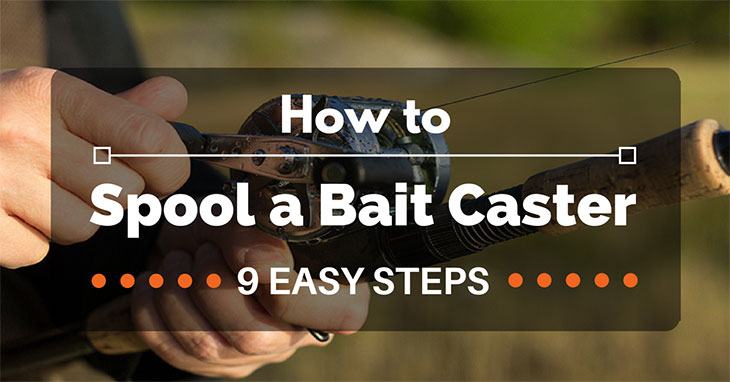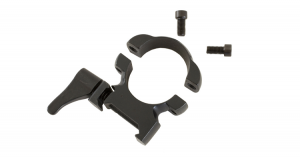Are you having problems with your baitcaster performance during fishing? This could be due to the improper spooling. Even the most experienced anglers have problems with their baitcaster while fishing. However, they managed to find a solution when they encounter one.
The secret to a worry free fishing is to make sure that you have spooled your baitcaster properly. You need to know the right way on how to spool a baitcaster. But before we proceed to the spooling procedure, you should know first the possible problems that you might encounter while fishing.
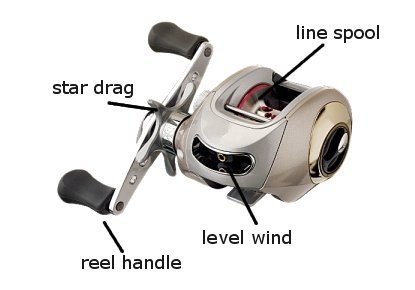
Common Baitcaster Performance Problems
Here are some common baitcaster performance problems that you might encounter and tips on how to fix them.
1. Braided Line Slippage
Although braided lines are extremely durable, they don’t have stretch which can lead to tangles as the line slips around the spool. For new users, they are not aware that the slick line does not stick easily to the spool. To improve its performance, it requires some anchoring. You can put a backing on the reel to help the braided line adhere. Some monofilament line placed on the base of the spool can help. (avetreels.net)
2. Line Size
Most anglers have the mistake of using the wrong size of line for their baitcaster. The user should go by the manufacturer’s suggestion. If you use a line that does not fit the reel it will affect your performance and result to tangles and casting problems. Use the right line size for your specific baitcaster reel. (westmarine.com)
3. Level Wind
One of the most common issues is the exposed level wind on baitcaster reel. The main function of level wind is to spool the line evenly. It is usually exposed to dirt, sand, water, and grit that can clog the parts and may affect its performance. Cleaning the reel can solve the problem. Wiping down after every use is suggested. (leeroysramblings.com)
4. Paw Damage
The movement of the equipment can be affected if the worm gear assembly is blocked by dirt. It will result to the stripping of the gear or an uneven ride of the paw. Piling up of line on one of the spools, you might need to replace some parts.(gameandfishmag.com)
5. Worn Bearings
Just like other tools, the bearing will wear out over time. The grit and dirt cause this damage particularly if the reel has been submerged in water. Bearings that are not performing well can affect the casting and reeling of your line. To remove the dirt, you can soak it in a metal cleaner, but since bearing cost less it is much easier is buy one to replace it. (www.boatus.com)
6. Over Lubrication
Too much lubrication on the reel is bad as not putting the lubrication. Over lubrication or not enough lubrication may clog bearings and affects your reel performance. Cleaning the over lubricated bearings is impossible. Apply only enough grease or oil.
7. Corrosion
Salt water can cause corrosion on the reel and may affect the performance. If you left the reel unclean it can damage the equipment permanently. Placing the rod on the ground can expose it to dirt. The dirt may cause too much damage to the reel and might require total replacement. Use toothbrush in cleaning the level wind. Rinse off the reel every after use especially if you are using it in the saltwater. Before storing apply a light coat of oil on the iron parts to prevent corrosion.
Steps on How to Spool a Baitcaster
Respooling a baitcaster is very vital. You need to do the spooling more often during your fishing activity to be able to catch the big fish.
Things you need:
- A Friend or Reel Spooling Station.
- Bait casting reel and fishing rod
- Scissors or Knife
- New fishing line
- Rags or Paper towels
- Pencil or wooden dowel
Instructions on Spooling a Baitcaster
Step 1 – Peel off the baitcaster old line and secure it to the spool by clipping the knot.
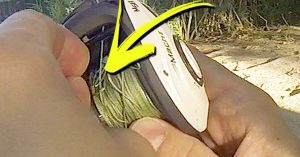
Step 2 – Clean the spool using a rag or paper towel to get rid of the dirt and grit which can weaken the line and cause a problem during your fishing activity.
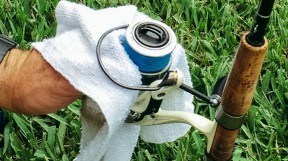
Step 3 – Mount the baitcaster reel on the rod. All the baitcaster are mounted on top of the rod. Baitcasting is the most expensive type of reel as well as the most difficult to use. This type of reel has a revolving and covered frame, and to wind the line it has a horizontal pool. One turn can spool 4 to 5 times, which gives several feet of line easily.
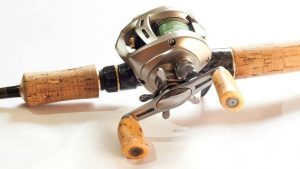
Step 4 – In the rod tip and guides up to the reel, thread the fresh spool of fishing line end. It is easy to tie the line around the spool. You don’t need a big fancy knot. Two simple overhand knots will work out fine. If you have plans of fishing bigger fish I suggest you use a more formal knot.
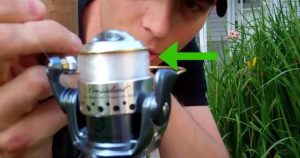
Step 5 – Thread the fishing line in the level winder, which looks like a thin loop of wire such as paper clip over the spool. The function of the winder is to help the line roll smoothly across the length of the spool rather than bunching it up on one area.
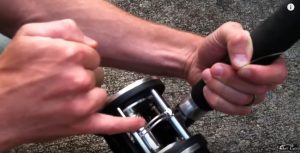
Step 6 – after securing knot tied around the spool you can start reeling line into the spool. In order to do this, you need to have the line into the line guides, ask someone to hold the spool at the end of a pen or pencil so the line will roll smoothly.
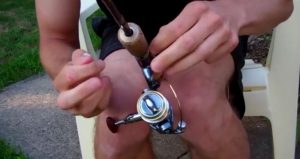
Step 7 – Prior to reeling in the line, clinch it between the thumb and index finger to produce tension on the line so it will spool tightly. Insert a wooden dowel or pencil into the spool of new line to act as an axle that will keep the line straight and avoid the plastic spool from rolling away.
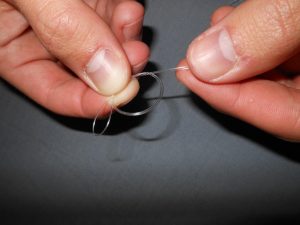
Step 8 – Turn the retrieval crank handle slowly as you add the line to the baitcaster on the right-hand part of the bait casters. Once you have added several layers of the fresh line across the pool, you can start adding line quicker.
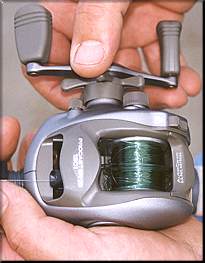
Step 9 – make sure to fill the baitcaster spool with a new line up to the recommended level. Normally, it depends on the line thickness and reel size. You can fill the reel around 20 to 50-pound line. You will notice markings on the inside lip of the spool to show the number of yards of line that can be placed to the reel, depending on the line weight.

Final
Don’t let improper spooling of baitcaster ruin your fishing adventure. Following the above instructions will help you achieve the needed casting distance for your spinning and baitcasting reels, extend the life of your line and keep the tangles away. This how to spool a baitcaster will make your fishing activities stress and worry free.
